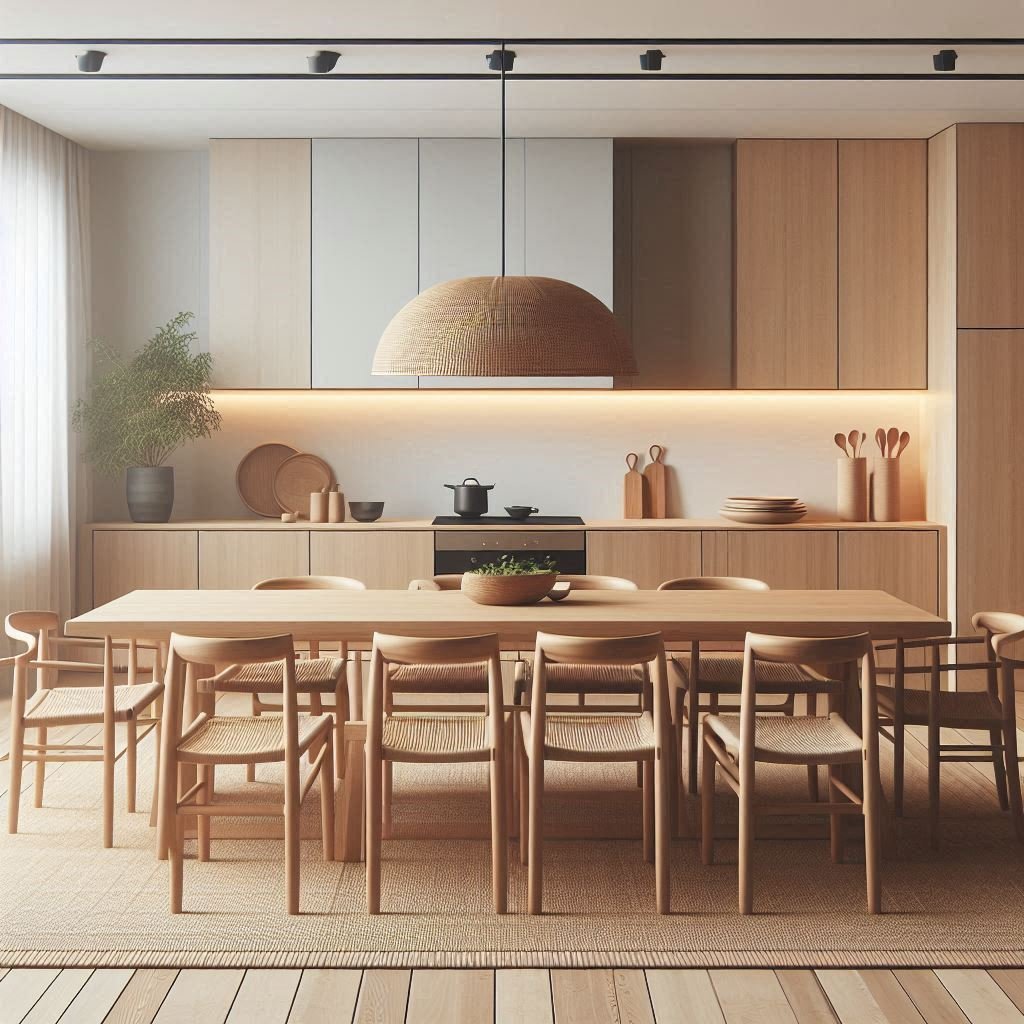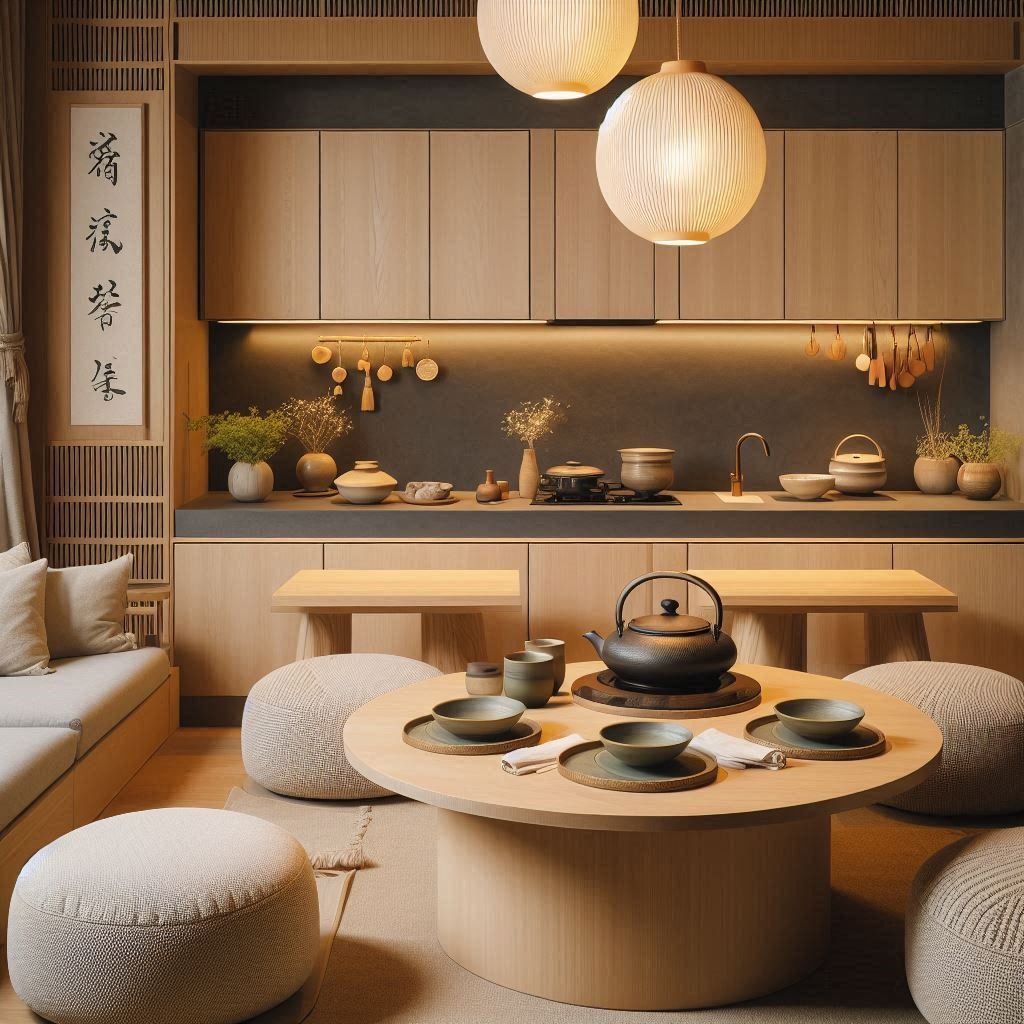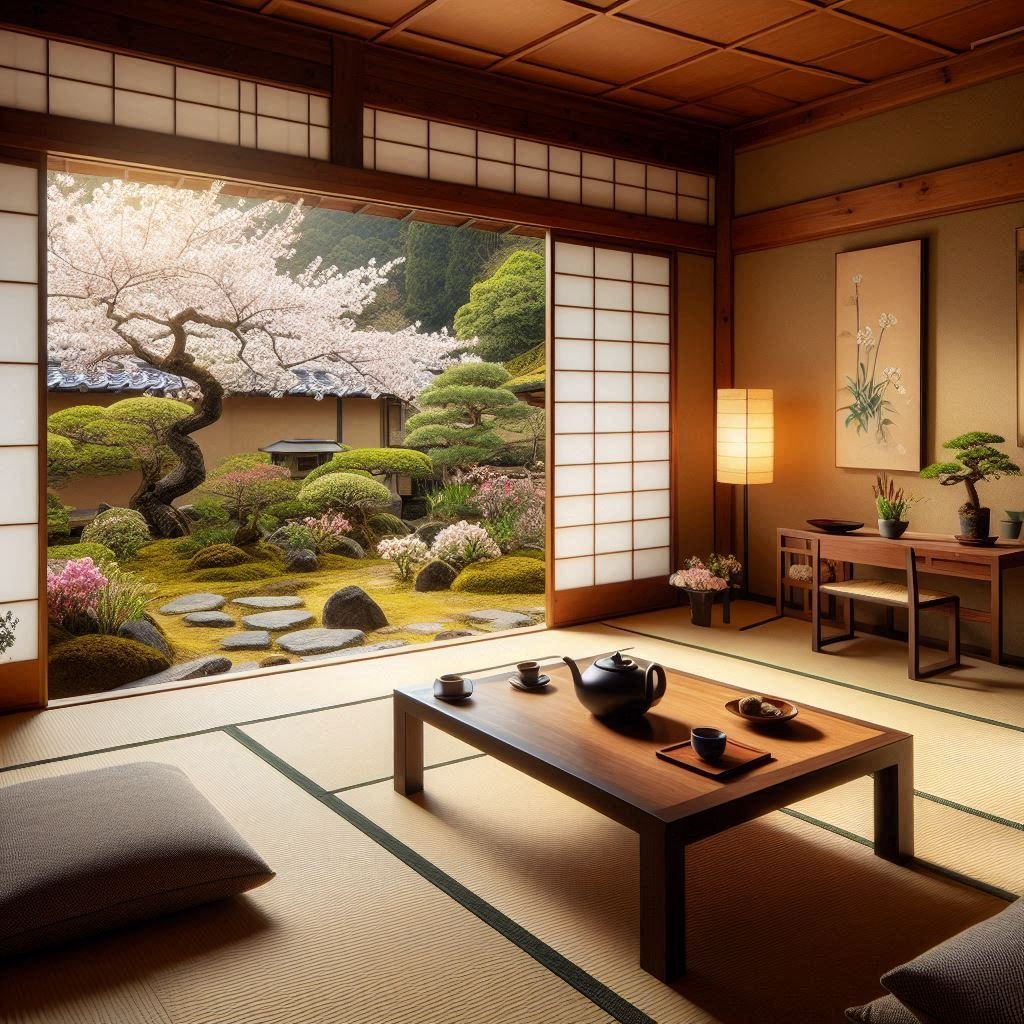15 Elegant Japandi Kitchen Ideas for Minimalist Style
Transform your kitchen with these 15 elegant Japandi kitchen ideas. Discover how to blend Japanese and Scandinavian design principles for a minimalist and serene cooking space.
In the world of interior design, the Japandi style has taken center stage. Combining the best of Japanese and Scandinavian aesthetics, Japandi is all about minimalism, functionality, and a deep connection to nature. This fusion results in spaces that are not only beautiful but also serene and highly functional. If you’re looking to transform your kitchen into a tranquil and stylish haven, these 15 elegant Japandi kitchen ideas will inspire you to embrace this minimalist style.
1. Clean Lines and Simple Shapes
The foundation of Japandi design lies in clean lines and simple shapes. This minimalist approach eliminates unnecessary clutter and emphasizes functionality. Choose furniture and fixtures with straight lines and sleek forms to maintain this aesthetic. For instance, opt for rectangular countertops and minimalist bar stools to create a cohesive look. This design strategy not only enhances visual appeal but also promotes a sense of calm and order, essential to the Japandi style. By focusing on simplicity and practicality, your space will exude tranquility and elegance, embodying the harmonious blend of Japanese and Scandinavian design principles.
2. Natural Materials
Incorporating natural materials is essential in a Japandi kitchen. Wood, bamboo, stone, and ceramics are popular choices that bring warmth and texture, making the space feel inviting and grounded. Consider wooden countertops for a warm, natural touch, bamboo cutting boards for eco-friendly functionality, and stone backsplashes to add a rugged, earthy element. Ceramics can be introduced through elegant dishes and cookware. These materials not only enhance the visual appeal of your kitchen but also create a harmonious, nature-inspired atmosphere that is central to Japandi design, blending the best of Japanese and Scandinavian aesthetics.
3. Neutral Color Palette
A neutral color palette is key to achieving a Japandi look. Think whites, grays, beiges, and soft earthy tones to create a soothing and harmonious environment. To add depth, mix different shades of the same color family. For example, pair light beige cabinets with a darker taupe backsplash. This subtle variation adds interest without overwhelming the senses, maintaining the minimalist aesthetic that defines Japandi style. These muted tones provide a serene backdrop that highlights natural materials and clean lines, ensuring your kitchen feels both modern and timeless. The calm, cohesive palette is perfect for fostering a peaceful, inviting atmosphere.
4. Functional Layout
Functionality is at the heart of Japandi design. A well-organized kitchen with a functional layout makes cooking and entertaining more enjoyable. Focus on creating a workflow that minimizes movement and maximizes efficiency. This could mean having the sink, stove, and refrigerator within easy reach of each other. Utilize kitchen islands for additional workspace and storage. Thoughtful placement of essential appliances and work areas streamlines kitchen tasks, while additional storage keeps the space clutter-free. By prioritizing function and order, a Japandi kitchen not only looks serene but also enhances daily routines, making meal preparation and social gatherings more seamless and enjoyable.
5. Minimalist Cabinetry
Japandi kitchens favor minimalist cabinetry with clean fronts and simple hardware. Flat-panel or slab cabinets are excellent choices for achieving this streamlined look. If you prefer handles, opt for understated designs in matte finishes. This approach keeps the focus on the beauty of the materials and the simplicity of the design, creating a serene and uncluttered space. By emphasizing sleek lines and subtle details, you enhance the aesthetic appeal and functionality of your kitchen, aligning with the Japandi philosophy of harmony and minimalism. This not only adds to the visual calmness but also makes the kitchen more efficient and pleasant to use.
6. Open Shelving
Open shelving is a hallmark of Japandi kitchens, adding a sense of openness and allowing you to showcase beautiful dishware and decor. Wooden shelves are an excellent choice to complement other natural elements in the room, such as wooden countertops or bamboo accents. To maintain the minimalist aesthetic, keep the shelves organized and uncluttered, displaying only a few carefully selected items. This approach not only enhances the visual appeal of your kitchen but also reinforces the Japandi principles of simplicity and functionality, creating a serene and harmonious space.
7. Integrated Appliances
To maintain a streamlined look in your kitchen, opt for integrated appliances. Built-in ovens, concealed fridges, and induction cooktops blend seamlessly with the cabinetry, creating a cohesive and unobtrusive appearance. This approach is ideal for minimalist spaces, as it eliminates visual clutter and enhances the room’s clean lines and simplicity. Integrated appliances not only contribute to the aesthetic harmony of your kitchen but also improve functionality by providing a more organized and efficient layout. This seamless integration ensures that the kitchen remains a serene and inviting space, true to the principles of Japandi design.
8. Streamlined Lighting
Lighting is a pivotal element in setting the ambiance of a Japandi kitchen. Opt for streamlined fixtures that offer sufficient illumination without unnecessary ornamentation. Pendant lights featuring clean, simple designs are well-suited for placement above the island or dining area. Alternatively, consider recessed lighting for a subtler approach that evenly brightens the entire space. By selecting lighting fixtures that align with the minimalist aesthetic of Japandi design, you can enhance the overall harmony and tranquility of your kitchen while ensuring practical functionality.
Lighting plays a vital role in Japanese kitchens, not only providing sufficient light to meet the needs of cooking and meal preparation but also creating a warm, comfortable, and peaceful atmosphere.
You can decorate specially customized neon signs according to the overall style of the kitchen, and choose unique colors, patterns, and fonts to show the personality and creativity of the kitchen. You can also set the light color and brightness of the custom neon signs as needed to adapt to different cooking and dining scenes.
The application of customized neon signs can not only enhance the overall beauty and comfort of the kitchen but also allow people to enjoy a more pleasant and peaceful time when cooking and dining.
9. Greenery and Natural Elements
Bringing nature indoors is a key aspect of Japandi design. Introduce potted plants, herbs, or a compact indoor garden to your kitchen space. Not only do these green additions contribute to improved air quality, but they also amplify the organic ambiance of the area. Opt for low-maintenance plant varieties such as succulents, ferns, or culinary herbs, which not only align with the natural aesthetic but also thrive in the typical conditions found in kitchens. By integrating greenery into your kitchen, you not only enhance its visual appeal but also foster a sense of harmony with the surrounding environment, embodying the essence of Japandi design.
10. Thoughtful Storage Solutions
In a minimalist kitchen, efficient storage solutions are indispensable for maintaining a clean and organized environment. Incorporate smart storage features such as pull-out drawers, concealed compartments, and overhead racks to maximize available space. These solutions help keep countertops free from clutter and ensure that every item has its designated spot, promoting a sense of orderliness and tranquility throughout the kitchen. By prioritizing functionality and minimizing visual distractions, smart storage solutions play a crucial role in enhancing the minimalist aesthetic while also optimizing the practicality of the space.
11. Textured Accents
In Japandi design, simplicity is elevated by the thoughtful inclusion of texture, which adds depth and visual interest to the space. Introduce textured accents such as woven rugs, linen towels, and ceramic vases to create a layered and inviting atmosphere. These elements provide nuanced variations that enrich the minimalist aesthetic without overwhelming the space with unnecessary clutter. By carefully selecting textures that complement the clean lines and natural materials characteristic of Japandi style, you can achieve a harmonious balance that enhances the overall look and feel of your home.
12. Zen-Inspired Decor
Infuse your kitchen with Zen-inspired elements to cultivate a serene and tranquil ambiance. Incorporate items like a miniature Zen garden, a delicate bonsai tree, or authentic Japanese pottery to evoke a sense of harmony and mindfulness in the space. These decorative accents not only contribute to the aesthetic appeal of the kitchen but also encourage a deeper connection with the present moment, fostering a peaceful environment for cooking and dining. By integrating these Zen-inspired touches, you can transform your kitchen into a soothing retreat where you can find moments of calm amidst the hustle and bustle of daily life.
13. Calm and Cozy Seating
Craft a welcoming seating area within your Japandi kitchen by selecting understated yet comfortable furniture pieces. Opt for seating options characterized by clean lines and crafted from natural materials to maintain the aesthetic harmony of the space. Consider incorporating cushioned stools, a sleek wooden bench, or a minimalist dining set to provide both coziness and functionality. Enhance the comfort factor by accessorizing with soft throws or cushions, inviting guests and family members to linger and enjoy the serene ambiance of your kitchen retreat.
14. Balanced Symmetry
Symmetry plays a pivotal role in Japandi design, fostering a sense of balance and harmony within the kitchen space. To achieve this, arrange furniture and decor items in a meticulously balanced manner, ensuring alignment and proportion throughout. Whether it's evenly spacing seating arrangements, aligning shelves, or symmetrically placing plants, the pursuit of symmetry fosters a serene and orderly atmosphere. By adhering to this principle, the kitchen not only exudes a sense of visual calm but also reflects the inherent balance found in nature, embodying the essence of Japandi design philosophy.
15. Personalized Touches
While Japandi design advocates for minimalism, it doesn't equate to a lack of personality. Infuse your kitchen with personalized touches that reflect your individuality and style. Incorporate elements such as family photos displayed in sleek frames, handcrafted pottery pieces, or a curated collection of beloved cookbooks. These personal artifacts not only imbue the space with warmth and character but also serve as subtle reminders of cherished memories and interests, elevating the kitchen into a truly unique and inviting environment tailored to your tastes.
Conclusion
Embracing Japandi design in your kitchen can transform it into a serene and functional space. By incorporating elements like clean lines, natural materials, and a neutral color palette, you can create a kitchen that is both elegant and minimalist. These 15 ideas offer a comprehensive guide to achieving a Japandi-inspired kitchen that promotes peace and simplicity.
Frequently Asked Questions
1. What is Japandi style?
Japandi style is a blend of Japanese and Scandinavian design principles, focusing on minimalism, natural materials, and functionality.
2. How can I make my kitchen look more Japandi?
Incorporate natural materials, use a neutral color palette, choose minimalist cabinetry, and add greenery to create a Japandi-inspired kitchen.
3. What colors are best for a Japandi kitchen?
Neutral colors like white, gray, beige, and soft earthy tones work best in a Japandi kitchen to create a soothing and harmonious environment.
4. Are open shelves a good idea for a Japandi kitchen?
Yes, open shelves are perfect for a Japandi kitchen as they add a sense of openness and allow you to showcase beautiful dishware and decor.
5. How do I keep my Japandi kitchen clutter-free?
Utilize smart storage solutions like pull-out drawers, hidden compartments, and overhead racks to keep the kitchen organized and maintain a minimalist aesthetic.






























